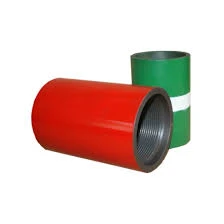- Afrikaans
- Albanian
- Amharic
- Arabic
- Armenian
- Azerbaijani
- Basque
- Belarusian
- Bengali
- Bosnian
- Bulgarian
- Catalan
- Cebuano
- Corsican
- Croatian
- Czech
- Danish
- Dutch
- English
- Esperanto
- Estonian
- Finnish
- French
- Frisian
- Galician
- Georgian
- German
- Greek
- Gujarati
- Haitian Creole
- hausa
- hawaiian
- Hebrew
- Hindi
- Miao
- Hungarian
- Icelandic
- igbo
- Indonesian
- irish
- Italian
- Japanese
- Javanese
- Kannada
- kazakh
- Khmer
- Rwandese
- Korean
- Kurdish
- Kyrgyz
- Lao
- Latin
- Latvian
- Lithuanian
- Luxembourgish
- Macedonian
- Malgashi
- Malay
- Malayalam
- Maltese
- Maori
- Marathi
- Mongolian
- Myanmar
- Nepali
- Norwegian
- Norwegian
- Occitan
- Pashto
- Persian
- Polish
- Portuguese
- Punjabi
- Romanian
- Russian
- Samoan
- Scottish Gaelic
- Serbian
- Sesotho
- Shona
- Sindhi
- Sinhala
- Slovak
- Slovenian
- Somali
- Spanish
- Sundanese
- Swahili
- Swedish
- Tagalog
- Tajik
- Tamil
- Tatar
- Telugu
- Thai
- Turkish
- Turkmen
- Ukrainian
- Urdu
- Uighur
- Uzbek
- Vietnamese
- Welsh
- Bantu
- Yiddish
- Yoruba
- Zulu
tubing pup joint
Understanding Tubing Pup Joints A Vital Component in Oil and Gas Operations
In the oil and gas industry, the efficiency and reliability of drilling operations are paramount for success. One critical component that plays a significant role in these operations is the tubing pup joint. While it may seem like a small piece of equipment, the tubing pup joint is essential for ensuring the integrity and functionality of the tubing string used in production and exploration wells.
What is a Tubing Pup Joint?
A tubing pup joint is a short section of pipe that is used to fill a gap in the tubular string, typically made of steel. The term pup joint refers to its relatively short length, which usually ranges from 2 to 8 feet. These joints are used primarily in conjunction with larger sections of tubing to build a complete, continuous string from the wellhead to the bottom of the well.
Purpose and Importance
The primary purpose of a tubing pup joint is to facilitate adjustments in the length of the tubing string
. In various drilling scenarios, the need for specific lengths can arise due to factors such as well depth, casing configuration, or changes in production requirements. Tubing pup joints allow for easy customization, thereby improving the efficiency of the drilling operation.Additionally, these joints help maintain proper alignment and tension within the tubing string. This alignment is crucial for preventing issues such as buckling or excessive stress on the tubing, which can lead to failures and costly repairs.
Specifications and Design
tubing pup joint

Tubing pup joints are designed to withstand high pressures and harsh environments typical in oil and gas applications. Manufacturers produce these joints in various sizes, grades, and configurations to meet specific operational demands. The most common types of tubing pup joints include those made from carbon steel, which provides a robust structure for handling the high-pressure conditions found in many wells.
When selecting tubing pup joints, certain specifications need to be considered. These include the outer diameter (OD), wall thickness, threading type, and material grade. Each of these specifications dictates the joint's ability to perform efficiently and safely in a specific well condition.
Installation and Use
The installation of tubing pup joints is relatively straightforward, but it requires adherence to safety protocols and industry standards. Technicians or rig crew members typically use make-up torque to ensure a secure connection between the pup joint and other sections of tubing. Properly installed tubing pup joints can significantly enhance the overall performance of the tubing string.
When utilized in the field, tubing pup joints must be regularly inspected for signs of wear, corrosion, or fatigue. Since these components are under constant stress due to pressure fluctuations and environmental conditions, routine maintenance is essential to prevent failures that could lead to costly downtimes.
Conclusion
In summary, tubing pup joints are crucial elements in the oil and gas industry, contributing to the efficiency, safety, and adaptability of drilling operations. Understanding their functions, specifications, and proper maintenance can significantly enhance drilling performance and reduce operational costs. As technology advances and drilling practices evolve, the importance of these seemingly simple components will continue to grow, ensuring that the oil and gas industry can meet the increasing demand for energy resources effectively and sustainably.
-
Tubing Pup Joints: Essential Components for Oil and Gas OperationsNewsJul.10,2025
-
Pup Joints: Essential Components for Reliable Drilling OperationsNewsJul.10,2025
-
Pipe Couplings: Connecting Your World EfficientlyNewsJul.10,2025
-
Mastering Oilfield Operations with Quality Tubing and CasingNewsJul.10,2025
-
High-Quality Casing Couplings for Every NeedNewsJul.10,2025
-
Boost Your Drilling Efficiency with Premium Crossover Tools & Seating NipplesNewsJul.10,2025







